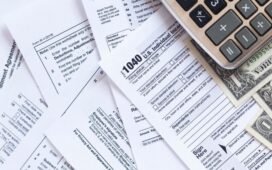Many investors assume that ownership is inherently safer than debt. I currently own equity in thousands of units and have invested six figures in real estate debts.
I can tell you firsthand that it’s not—at least not always.
Still, real estate equity and debt investments serve different purposes in your portfolio. Before parsing the risks of equity versus debt investments in 2024, it’s worth reviewing the roles each plays.
The Role of Debt Investments
Most debt investments come with a fixed interest rate. You know the return you can expect to earn, assuming the borrower performs.
Real estate-related debts could be secured by a lien against real property. If the borrower defaults, the lender can foreclose on the property to recover the money. Or debt may not be secured with a lien but come with a personal or corporate guarantee.
Just a few weeks ago, our passive real estate investing club at SparkRental invested in a 10% note secured with a lien under a 50% loan-to-value (LTV) ratio. It came with a rolling six-month term—in other words, we can each terminate our note with six months’ notice. It also came with personal and corporate guarantees from a highly successful real estate investor who owns over a hundred units and flips 30 to 50 homes each year.
Is a 10% return something to write home about? Hardly, when that’s roughly the long-term average stock market return. But unlike stocks, this note pays predictable interest every month and comes with substantial security.
We’ve also invested in a 15% note, backed by a corporate guarantee from a company that owns about a dozen cash-flowing businesses. It carries more risk but pays a much higher return. (So far, they’ve paid like clockwork).
Which is the better investment? Are they better than equity investments despite not offering upside potential?
These are the wrong questions. Instead, I ask how comfortable I feel with the return versus the risk and whether I currently prefer immediate income or the chance of higher returns in a few years from an equity investment.
The Role of Equity Investments
On the other end of the spectrum, we recently invested fractionally in a 200-unit apartment complex. While it doesn’t need major value-add renovations, the syndicators are converting the units to Section 8, taking advantage of a loophole in the LIHTC rules restricting rents.
The bottom line: They’ll be able to raise rents by 50% or more. And that’s based on today’s Section 8-approved rents—it doesn’t require future rent growth.
However, it will take a couple of years to replace all the rent-restricted cash tenants with Section 8 renters, so the investment won’t pay distributions for at least two years. But once the rents are stabilized, they plan to refinance the property to return investors’ capital, and then pay distributions indefinitely (one model for “infinite returns”). If the property were to sell in a few years rather than refinancing, we’d potentially be looking at 20%-40%-plus annualized returns.
In this case, we own a tiny piece of a huge property. We participate in the upside and stand to earn huge returns, but it will take a while. Is this a better or worse investment than the 10% fixed-interest note?
Again, it’s just a different investment. There’s a loan against this property, so in the event of an unforeseen catastrophe, the lender gets paid first. But we stand to earn far higher returns and potentially cash flow to infinity and beyond.
Or you could invest in rental properties mobile home parks, or retail or vacation rentals. We’ve invested in all of these in our Co-Investing Club. We hope that the combination of appreciation and widening cash flow margins deliver 15%-plus returns in the years to come. But these investments come with downside risks as well.
Investing in Debt vs. Equity in 2024
Real estate is not an elevator that only goes up, as far too many investors have discovered firsthand over the last 18 months.
Broadly speaking, I’ve seen real estate equity investments get hit much harder than debt investments. But that doesn’t mean debt investments have been risk-free, and it doesn’t mean that investments you make today will suffer the same problems as investments made two years ago.
Keep these real estate investing risk factors in mind as you consider investing in 2024.
Interest rate risk
The interest rate risk investors face today is different from the risk of two years ago.
Two years ago, syndicators played fast and loose with variable interest debt and short-term bridge loans. Interest rates have been low for decades, and they’ll stay that way forever, right?
Wrong. Many syndicators got caught with their pants down as rates shot through the roof. It’s caused many deals to implode, with higher loan payments creating negative cash flow.
Today, the risk is more subtle. Everyone just assumes interest rates will fall later this year and throughout 2025. That might happen—or it might not. Don’t count on interest rates and cap rates being lower two to three years from now. That’s speculation and a little better than gambling.
Word to the wise: Vet potential investments by assuming higher, not lower, interest rates and cap rates upon exit. If you plan to invest in real estate equity, look for deals financed with long-term, fixed-interest debt.
And yes, those deals often still cash flow well, despite today’s higher rates. For example, Shaun Martin of We Buy Houses in Denver explains: “I recently bought a $2 million property in Golden, Colorado, and financed the whole property at a fixed 7.5% interest rate. This made sense because it still cash flowed and has plenty of potential for forced appreciation to boost equity in the near future.”
I believe there’s plenty of opportunity to invest in real estate equity this year. But I steer clear of investments that assume a low exit cap rate or low refinance interest rate in under three years.
Pinched cash flow risk
Historically, cash flow was more predictable than appreciation. Rents almost never drop, while property values drop more frequently. Unfortunately, the last 18 months have showcased that “almost never” isn’t the same as “never.”
In many markets, rents have either dropped or leveled off. In many others, rents have inched upward, but not enough to keep pace with expenses.
Insurance premiums and labor costs, in particular, have spiked over the last two years. If your insurance premium rises by 50% and your maintenance, repairs, and management labor costs have risen 5%, but your rents have only risen 1%, cash flow gets pinched. Or it becomes negative, transforming your asset into a liability.
Sure, that risk affects both real estate equity and debt investments. But it adds far more risk to equity investments, as owners are the ones coughing up money to make their loan payments each month. If the owner falls behind on loan payments, the lender has the luxury of reviewing the equity in the property and making a judgment call: Modify the loan or otherwise work with the borrower or foreclose to recover your loan amount.
When the lender’s loan only makes up 50% to 75% of the property’s value, they tend to feel pretty secure in their investment. And sure, in a disaster scenario they might only recover 70% of the property value while having lent 75%. They take a haircut. But they don’t lose everything, like the equity owners do.
Wild Card: The threat of recession
In late 2022, many economists and corporate banks declared a “100% chance of recession” in 2023.
Spoiler alert: It never came. In early 2024, pundits and investors seem to believe there’s a 0% chance of recession in the immediate future. That seems just as absurd as the 100% recession risk forecast.
To be clear, I’m not shouting that the sky is falling. I doubt we’ll see a recession in 2024 or early 2025. But that doesn’t mean we shouldn’t consider the possibility at all.
A recession would create two opposing forces for real estate investments. On the downside, defaults on rents and mortgage loans would jump, as would vacancy rates and presumably foreclosure rates. Those all put downward pressure on cash flow and property values.
On the upside, JPow and company at the Federal Reserve would cut rates like they’re coeds in a slasher flick. Lower interest rates would pave the way for cheap refinances and lower cap rates after the initial panic passes.
Debt investments would see higher default risk. But the majority wouldn’t default, and they’d pay higher interest rates than new debt investments after the Fed starts slashing.
Equity investments would likely see a short-term drop in property values, followed by a post-recession rebound. Here’s how home prices have fared during and after recessions over the last 60 years:

Property owners with negative cash flow could potentially refinance to get back above water and survive the recession—or not.
Real estate investments come with real risk, and you should never forget it.
Verdict: Equity or Debt in 2024?
“Consider your own investing goals and risk appetite first,” suggests Annie Dickerson of Goodegg Investments. “Use that as your guiding star, and adjust accordingly based on the greater real estate market. For example, if you typically have a fairly healthy appetite for risk and mostly invest in equity, but you see that the market is pulling back, you might consider rebalancing in the short term to incorporate more conservative debt or preferred equity investments, and vice versa.”
In general, I see lower risk in real estate debt investments in 2024. Every single one of my debt investments has performed as promised over the last few years. Meanwhile, I’ve seen some equity investments struggle with negative cash flow, capital calls, and rescue capital stepping in ahead of prior investors.
But I also believe there’s an opportunity for equity investments. As some past syndication deals from 2021-2022 unravel, they can become bargains for today’s investors.
When we vet deals as an investment club, we pay close attention to these risks I’ve outlined. We like to see longer-term, fixed-interest debts, ideally assumed from the seller. For example, we invested in a deal that assumed a 5.1% fixed-interest loan with nine years remaining. I don’t know if there will be a good market for selling within the next three years, but I’m pretty confident there will be one within the next nine.
We also look at rent versus expense forecasts. I get nervous when I see high forecast rent growth with modest insurance and labor cost growth. Instead, I prefer to see some relatively certain reason for higher rents, such as the Section 8 conversion example based on today’s rents. In a different property, the syndicator plans to split the four-bedroom units into smaller units (with a proof of concept already completed and earning higher income).
Finally, how recession-resistant is the investment? We recently invested in a portfolio of four mobile home parks, which had 100% occupancy and a waiting list for entry. In a recession, that waiting list would only get longer.
Consider debt investments for income and predictability and equity investments for long-term upside potential. Just make sure there’s a clear and conservative plan for the equity investments to survive short-term turbulence and last long enough to see lower interest rates and calmer markets.
Most of all, diversify your real estate investments. You don’t need a crystal ball when you dollar-cost average your investments.
Ready to succeed in real estate investing? Create a free BiggerPockets account to learn about investment strategies; ask questions and get answers from our community of +2 million members; connect with investor-friendly agents; and so much more.
Note By BiggerPockets: These are opinions written by the author and do not necessarily represent the opinions of BiggerPockets.















